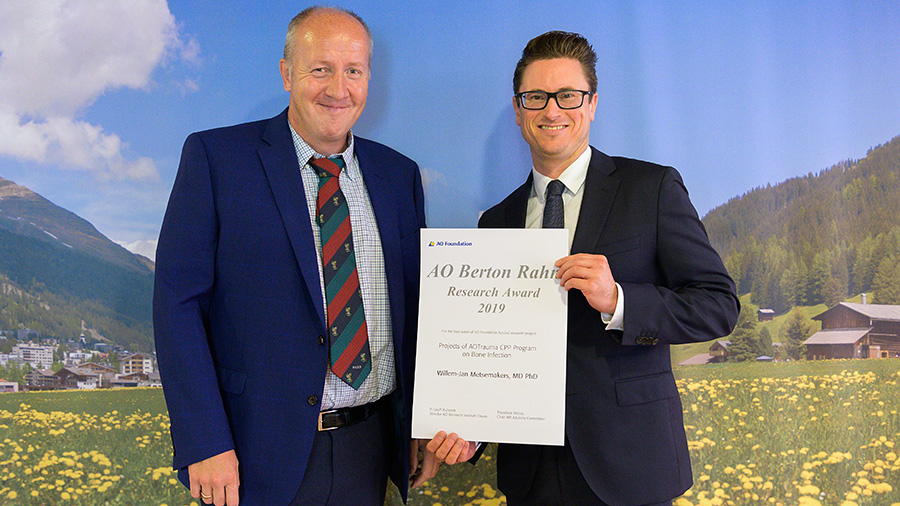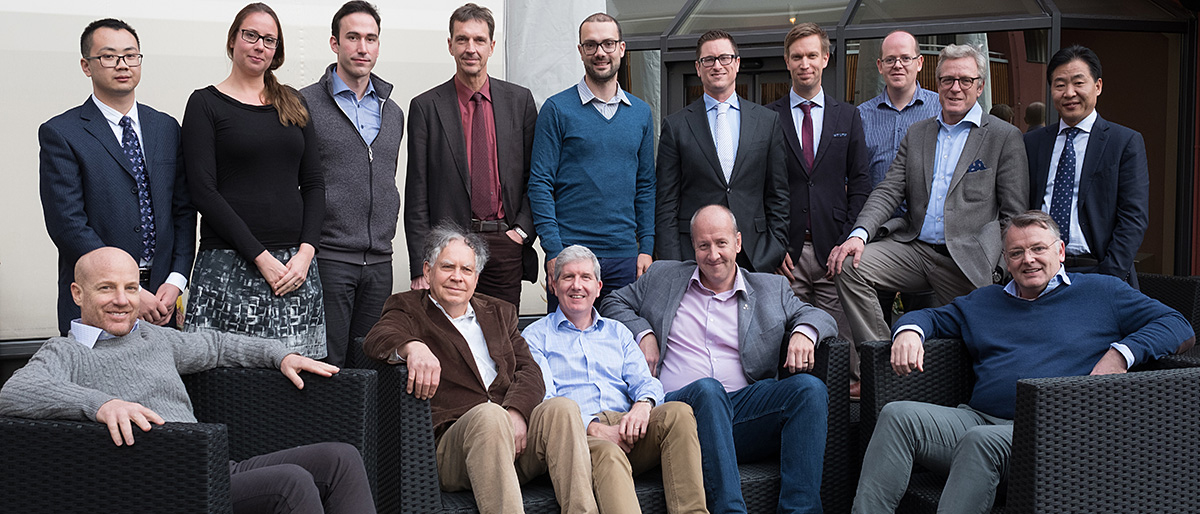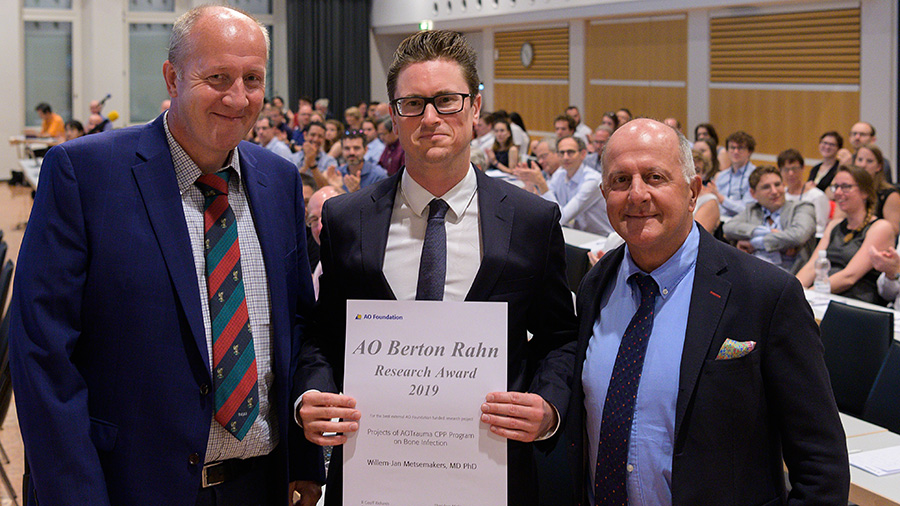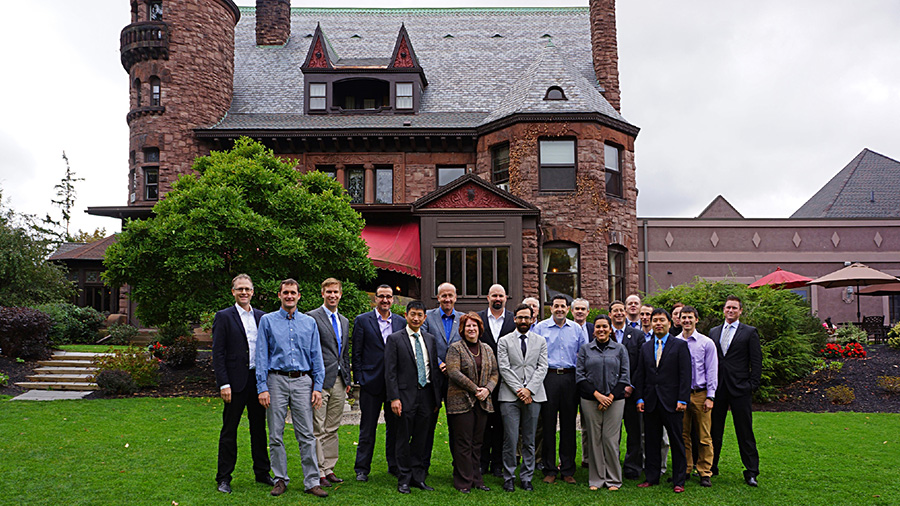Multidisciplinary work for clinical impact

Fracture-related infection (FRI) is one of the most complex problems in modern orthopedic trauma surgery. Even after exemplary surgical care, patients can still suffer from infection at the site of the operation, and this has significant impact on their recovery. The problem of FRI is, of course, nothing new. The AO founders also battled with the risks of infection as they worked to win over the medical establishment to their new principles of open reduction and internal fixation. The AO principles are now accepted as best practice across the globe, and have delivered significant health benefits and economic savings, but infection remains a very real problem for both surgeons and patients that seemingly cannot be completely eliminated.
In recent decades the problem of implant-related bone infection has gained greater attention, however, this has primarily focused on periprosthetic joint infection (PJI), rather than on FRI. The different sections of the AO Foundation (AO Technical Commission, AO Trauma, and AO Research Institute Davos (ARI)) have each addressed the problem of FRI with preclinical and clinical research projects, their common goal being to improve care for patients suffering from FRI. Some of the key achievements of this collaboration are already having clinical impact. This demonstrates the impact that the AO can have when minds are focused on a common topic and input comes from across the AO and beyond.
In addition to providing independent committees and educational events, the AO is also unique in the mentorship opportunities it offers—giving the next generations of specialists the chance to connect with established figures in their field. Willem-Jan Metsemakers' experience bears this out. "When I first met Geoff Richards, Edward Schwarz, and Stephen Kates, I had just finished my residency and was passionate about tackling FRI, which we commonly see in clinical practice."
The Berton Rahn award, the AO's highest research award, is given annually in recognition of excellent clinically driven research that is funded by the AO directly or through one of the clinical divisions. This year, at the eCM conference in Davos on orthopedic infection, the award was given for outstanding and truly collaborative work in the field of FRI to Willem-Jan Metsemakers. Prof Metsemakers is a Trauma Surgeon at the University Hospitals Leuven, Belgium, who specializes in treating bone infections and who has been an AO Research Institute Davos medical research fellow. In particular, the prize was awarded for the work he carried out within the AO at AO Research Institute Davos, the AO Trauma clinical priority program (CPP) on Bone Infection, and the AO Technical Commission Anti-Infection Task Force (AITF). The award also recognizes his leadership of the Fracture-Related Infection Consensus Group—the first time we have seen cooperation on this scale between the AO Foundation and outside organizations such as the Orthopaedic Trauma Association (OTA), the European Bone and Joint Society (EBJIS), and the Pro-Implant Foundation.
Edward Schwarz, from the University of Rochester Medical Center, is involved with the AO's cross-divisional focus on FRI as part of the AO Trauma CPP on Bone Infection. The CPP has largely involved scientific studies, with a clinical focus provided by the program chair Stephen Kates, Professor and Chairman of Orthopaedic Surgery at Virginia Commonwealth University, Richmond. Both are passionate about encouraging orthopedic surgeons to become involved in research. The AO has a unique role to play in bringing researchers and clinicians together. "The research question changes when we see the reality," says Fintan Moriarty, Principal Investigator Musculoskeletal Infection, at AO Research Institute Davos. Kates echoes this sentiment, "the focus sharpens when the clinician and the scientist come together to discuss the problem, thrash out common methodology."
Knowing what to focus on in order to move this research forward will be key to achieving lasting clinical impact.
From a basic science perspective, there is great interest in understanding more about how the bacteria function in bone. This is where further lab work comes in—whether it is to understand more about the toxins the bacteria produce, or to investigate new approaches to identifying which patients have high volumes of masked bacteria 'hiding' in their bones, progress on this, when it comes, will be multidisciplinary.
Coming from the clinical perspective, Metsemakers stressed the importance now for the health care community to take a coherent and strategic view regarding next steps. Standardized guidelines are an essential part of gaining overall understanding of what is working and what needs to be improved. At the time I first joined the AO, there were articles on PJI, focusing on consensus guidelines—but there was no unity at all with respect to FRI. Overall, within the AO community, FRI is clearly on top of the list as an unsolved clinical issue, says Stephen Kates. ‘’Our main problem was the lack of common treatment approaches, terminology, and definitions. We therefore started to involve all the different organizations involved on this, under one AO umbrella to develop uniform recommendations which are made available on worldwide scale."
The AO's development driver, the AO Technical Commission (AOTK System), is also at the core of this project. Together with the AO Trauma CPP on bone infection two international consensus meetings to develop consensus guidelines were convened. The genuine collaboration between AO entities creates powerful synergies—bringing different specialists in different fields together to solve this one vital problem. "Within this consensus group we are one team leading together, those more experienced were always supportive, and that's what makes this project so great—support from the AO and the entire scientific community," says Michael Verhofstad, Head of the AO Technical Commission AITF.
Metsemakers stresses the value that the AO brings to this work—enabling full-cycle cooperation from preclinical to clinical research, "and then AO Technical Commission enables us to circle round and take the next step. I am very fortunate to have been connected with the AO Technical Commission as well as with the AO Trauma CPP and with AO Research Institute Davos starting already years ago as a fellow and currently as a surgeon."
Geoff Richards, the director of AO Research Institute Davos, concludes, ‘’we may not know today where exactly the next breakthrough will come from in this fight against infection, but it is clear that multidisciplinary international teams and focused events like the eCM conference offer a vital opportunity to come together and explore this problem which helps to advance patient care in infection cases.’’




